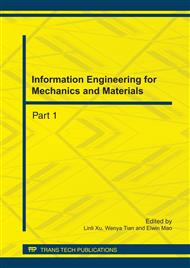p.904
p.909
p.913
p.917
p.922
p.927
p.932
p.937
p.942
The Modeling and Application of Moving Deformable Barrier Model with Beam Element
Abstract:
According to GB 20071-2006 regulation, the finite element model of aluminum honeycomb block was built with beam elements, and the corresponding moving deformable barrier (MDB) model was validated. Side impacts between a vehicle and the MDBs which were set up with beam elements and solid elements respectively, were simulated. The velocities of five key points on the B pillar and the door were measured and compared with the test data. The results show that the demands of the regulations could be achieved by the MDB with beam elements, while at the same time, the efficiency of computing is improved and better local characteristic is obtained.
Info:
Periodical:
Pages:
922-926
Citation:
Online since:
July 2011
Authors:
Keywords:
Price:
Сopyright:
© 2011 Trans Tech Publications Ltd. All Rights Reserved
Share:
Citation:


